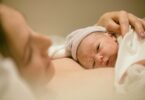Current advice on a Fertility Diet predominantly stems from data acquired in the second American Nurses’ Health Study.
This study started in 1976 with more than 120.000 married, female nurses between the ages of thirty and fifty-five years. It was designed to examine possible long-term health effects of birth control pills. Each woman completed a questionnaire every two years, giving information on the state of their health, nutrition, frequency of exercise, about work and stress, and even about very personal matters such as social relationships.
The second round of the Nurses’ Health Study was started in 1989 to explore reproductive and other health issues that couldn’t be answered by the original study.
Among the participants, 18555 women were identified who were trying to get pregnant. None had previously had problems with infertility. Over a period of 8 years, the women reported almost 27000 “attempts at pregnancy”, lasting from a few weeks to more than 12 months.
This allowed investigators to conduct research aimed at identifying risk factors for infertility, pregnancy loss, pregnancy complications, and benign gynecologic pathology.
The studies are now in their third generation with the Nurses’ Health Study 3 (which is still enrolling male and female nurses) and count more than 275,000 participants. Thus, these studies are among the largest prospective investigations into the risk factors for major chronic diseases in women.
The huge amounts of data gathered in the American Nurses’ Health Studies II have allowed for valuable insight into the associations between lifestyle, nutrition, and reproductive health of women. These have shaped advice on lifestyle and diet from preconception to pregnancy and are included in the recommendations for a Fertility Diet.







